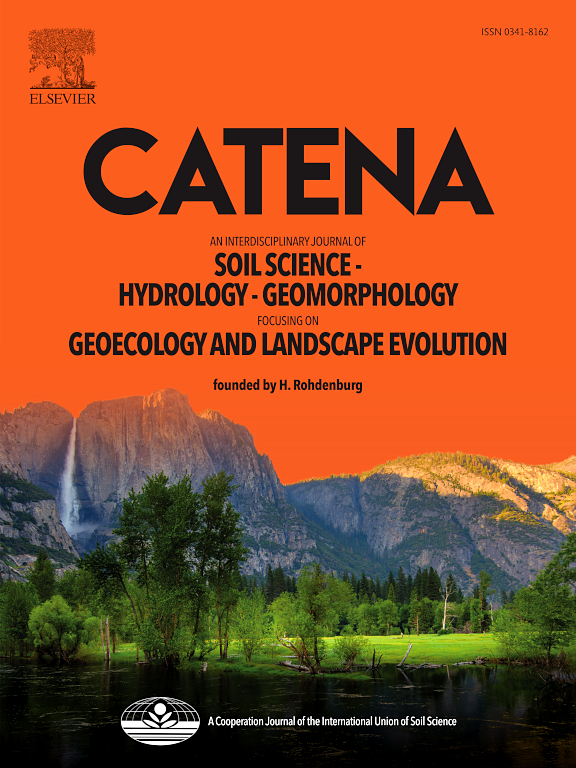Uncovering soil preferential flow induced by different drip irrigation emitter settings: Insights integrating wetting-fronts image variability, HYDRUS-2D, and active region model
IF 5.4
1区 农林科学
Q1 GEOSCIENCES, MULTIDISCIPLINARY
引用次数: 0
Abstract
Drip irrigation has gained widespread adoption in arid regions globally to counteract the water scarcity, yet the non-uniformity of soil water flow under drip irrigation remains inadequately understood. This study presented an indoor infiltration experiment with two soil types (sandy loam and sandy), three emitter sapcing (10 cm, 20 cm, and 30 cm), and two discharge rates (3 L/h and 4 L/h). We analyzed wetting front image variability, using HYDRUS-2D to interpret fractal parameters in active region model during infiltration. Initially, the wetting front was unstable, with a preferential flow ratio dropping from 90 % to 20 % and a variation coefficient decreasing from approximately 2 to below 1 across both soil types. The preferential pathways were found forming in a finger shape ways. Fractal parameters peaked at 15–30 min in sandy loam and 5–10 min in sandy soils, reflecting this instability. HYDRUS-2D data confirmed the non-uniformity indicated by the active region model, showing reduced fractal parameters with wider emitter spacing in sandy soils and an increase with larger spacing in sandy loam. Moreover, the principal component analysis identified optimal irrigation parameters: a 20 cm spacing with a 4 L/h discharge for sandy loam and a 40 cm spacing with the same discharge for sandy soils. Our research confirmed the presence of soil preferential flow even under drip irrigation and developed a new evaluation framework to assess the effectiveness of various drip irrigation parameters, considering soil preferential flow. This research offers new insights into optimizing drip irrigation in arid regions, enhancing water management in these areas.
求助全文
约1分钟内获得全文
求助全文
来源期刊

Catena
环境科学-地球科学综合
CiteScore
10.50
自引率
9.70%
发文量
816
审稿时长
54 days
期刊介绍:
Catena publishes papers describing original field and laboratory investigations and reviews on geoecology and landscape evolution with emphasis on interdisciplinary aspects of soil science, hydrology and geomorphology. It aims to disseminate new knowledge and foster better understanding of the physical environment, of evolutionary sequences that have resulted in past and current landscapes, and of the natural processes that are likely to determine the fate of our terrestrial environment.
Papers within any one of the above topics are welcome provided they are of sufficiently wide interest and relevance.
 求助内容:
求助内容: 应助结果提醒方式:
应助结果提醒方式:


